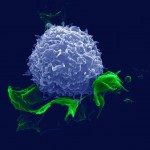Link to Pubmed [PMID] – 8416439
N. Engl. J. Med. 1993 Jan;328(2):95-9
BACKGROUND: Cholangitis in patients with the acquired immunodeficiency syndrome (AIDS) is usually associated with opportunistic infections by cryptosporidium species or cytomegalovirus, but in about a third of cases no opportunistic agent is identified. We suspected some of these cases of biliary disease might be explained by infection with the microsporidia species Enterocytozoon bieneusi, an obligate intracellular protozoan that causes chronic diarrhea in patients infected with the human immunodeficiency virus (HIV).
METHODS: We studied eight HIV-infected homosexual men (in either group IV of the classification of the Centers for Disease Control and Prevention or group II, with a CD4 cell count of < or = 10 per cubic millimeter) who were referred because of cholangitis for which no causative agent had been found by standard tests. All the patients underwent abdominal ultrasonography and endoscopic ultrasonography or endoscopic retrograde cholangiopancreatography with collection of bile from the common bile duct. One patient had transhepatic biliary catheterization, and two others had cholecystectomy. Bile samples, duodenal- and liver-biopsy specimens, and gallbladder tissue were studied by light and electron microscopy.
RESULTS: All eight patients with unexplained AIDS-related cholangitis had biliary microsporidosis. Intraepithelial E. bieneusi spores (1 to 2 microns) and supranuclear plasmodia (3 to 8 microns) were identified in the six duodenal-biopsy specimens. May-Grünwald-Giemsa staining of bile samples revealed free forms of microsporidia in all eight patients, and the presence of E. bieneusi was confirmed by electron microscopy. E. bieneusi was also identified in ductal biliary cells on a liver biopsy, in one common-bile-duct smear, and in gallbladder epithelium (in two patients). Four patients were found to have associated but previously undetected biliary or duodenal cryptosporidiosis, whereas another had biliary infection associated with cytomegalovirus.
CONCLUSIONS: Infection of the biliary tract with E. bieneusi is associated with and may be a cause of AIDS-related cholangitis.

